Choosing one between header bidding and ad mediation can be a tricky choice as one needs to be well-versed with the nuts and bolts of both these technologies. That’s why we’ve come up with this blog. So dive in and discover valuable insights about header bidding vs ad mediation.
Have you ever heard of the idiomatic expression “bidding war”? Well, if you’re one of the players in the ad tech industry, you’ve probably heard of it and even experienced it firsthand. That’s because when it comes to monetizing digital content, the competition can be fierce.
Why? Let’s face it, publishers and advertisers strive to increase their revenue and put in their best efforts to attain those goals. If you’re one of them, you must have come across terms – header bidding vs ad mediation.
What is Header Bidding & Ad Mediation?
Header bidding vs. ad mediation – two popular techniques publishers use to optimize ad revenue. Both options have evolved, with new capabilities and features constantly being added.
In fact, Taboola recently expanded its native bidding service with the launch of Taboola Header Bidding, enabling advertisers to reach new suppliers and helping publishers generate incremental revenue from their display ads inventory.
Ad mediation has also kept pace with advancements in the ad tech industry. For example, ironSource, a leading mobile monetization platform, offers a hybrid mediation solution that enables mobile app developers to access multiple demand sources and optimize their ad inventory.
In this blog post, we’ll break down the basics of header bidding vs ad mediation and understand their difference, pros, and cons. So, sit tight and get ready to bid for the best ad revenue.
What is Header Bidding?
As a quick refresher, we’ve covered header bidding and its aspects in previous blog posts. But for those unfamiliar with the term, let’s quickly define it briefly.
Ideated back in 2014 and made its way into the mainstream in 2016, header bidding is a technique publishers use. It allows them to offer their ad inventory to multiple SSPs (Supply Side Platforms) and ad exchanges before requesting the ad servers.
How Does Header Bidding Work?
Header bidding starts with embedding JavaScript code in the webpage’s header section. When a user visits the site, this code triggers and sends bid requests to various ad networks, SSPs, and ad exchanges all at once.
These demand partners then conduct quick internal auctions, determining their highest bid for the impression. The top bids are collected within the user’s browser and sent to the publisher’s ad server before calling any direct inventory.
Note: Only if there is no suitable bid from the header bidding process does the ad server then consider direct inventory or other ad sources.
This simultaneous auctioning enables publishers to see the highest bids upfront, ensuring they get the best possible price for their ad space.
Through this process, publishers can control which sources participate, leading to increased competition and higher ad prices. This method also reduces reliance on a single SSP (Supply Side Platforms), increasing the ad fill rate and optimizing yield. Moreover, since the auction happens in a single event rather than sequentially, reporting discrepancies are minimized, which provides more accurate and streamlined results. Ultimately, header bidding ensures better exposure for advertisers and maximizes earnings for publishers.
That said, let’s now understand what ad mediation is.
What’s Ad Mediation?
Ad mediation, on the other hand, refers to the technology that enables publishers to manage multiple demand sources and ad networks within a single platform. What’s different about it? It gives you more control, such as the ability to set up rules and preferences for each ad network. These rules and preferences can include priority, fill rate, and eCPM.
Based on your preferences, the ad mediation platform will look for the best ad network to serve the ads. It helps publishers save considerable time as they won’t have to manually optimize their fill rate and revenue across different ad networks.
Though both have some similarities, they differ in multiple ways. That said, let’s now take a look at the differences they share.
Let’s have a look at the formula using which publishers are increasing their ad revenue through the ad mediation platforms.
Ad revenue = Ad request* Fill rate* eCPM
How does Ad Mediation Work?
When a user navigates to the website, an ad request is sent to the mediation platform, including details such as user demographics, site data, and ad placement information. The mediation platform then communicates with multiple ad networks, which invites them to bid on the ad impression.
These ad networks evaluate the request based on their targeting criteria and bid the amount they are willing to pay for the impression.
The ad mediation platform selects the highest bid from the participating ad networks, sometimes using a waterfall model where networks are ranked, and the highest-ranked network with available ads fills the request. The mediation platform also tracks the performance of each ad network, such as fill rates, CPMs, and user engagement, using this data to optimize future ad requests. It opens the door for publishers to gain more revenue by integrating with multiple ad networks.
Also Read – Programmatic Ad Mediation Explained for Publishers
Header Bidding vs Ad Mediation: What are the Differences?
Header bidding and Ad mediation share some similarities, but they differ significantly in multiple aspects. Header bidding allows publishers to offer their ad inventory to multiple ad exchanges at once, while ad mediation consolidates multiple ad networks into a single ad server.
Ad Selling Approach
As mentioned, header bidding allows publishers to offer their ad inventory to multiple ad exchanges. It works by publishers inserting a header tag on their website’s header, a piece of code that sends bid requests to multiple ad exchanges. After that, advertisers start bidding for publishers’ ad space in real-time, and the one with the highest bid wins.
Talking about ad mediation, publishers manage and optimize their ad inventory by singling out the best ad networks to serve an ad for each impression. Unlike header bidding, to get started with this, publishers need to integrate multiple ad networks into a single ad server, which selects the best-performing network for each ad impression based on predefined rules.
Revenue Potential
Next, implementing header bidding can result in higher revenue potential for publishers. It’s because ad inventory is sold to the highest bidder in the auction. Apparently, this also leads to increased competition and higher CPM (Cost Per Mile), which translates to high revenue.
Now coming to ad mediation, while it still helps publishers optimize their ad inventory, it may not result in maximum revenue potential. When you rely on the ad server, it selects the best-performing network based on predefined rules, which may not necessarily result in the highest bid.
Implementation Complexity
Header bidding can be more complex to implement compared to ad mediation. Publishers need to insert a header tag on their website’s header, which involves multiple ad exchanges and bidders. This can require more technical knowledge and resources.
Ad mediation, on the other hand, is simpler to implement as it involves integrating multiple ad networks into a single ad server. Publishers can set up rules and preferences for each network, and the ad server handles the rest.
Optimization Capabilities
Header bidding can help publishers optimize their ad inventory by exposing them to multiple ad exchanges and bidders. This can lead to increased competition and higher CPMs. However, optimization capabilities may be limited to the bidders and ad exchanges used in the header bidding setup.
On the other hand, Ad mediation allows publishers to optimize their ad inventory by selecting the best-performing network for each impression. This can help maximize revenue by choosing the network most likely to fill the impression at the highest CPM. The ad server can also fill unsold inventory with ads from other networks, ensuring maximum revenue.
| Header Bidding | Ad Mediation |
| Publishers offer ad inventory to multiple ad exchanges simultaneously | Multiple ad networks are integrated into a single ad server |
| Bidders compete in real-time for ad inventory | Ad server selects the best-performing network based on predefined rules |
| Can result in higher revenue for publishers as inventory is sold to the highest bidder | Helps publishers optimize ad inventory by selecting the best network for each impression |
| Implementation requires inserting a header tag on website’s header | Implementation requires integrating multiple ad networks into a single ad server |
| More complex implementation but can result in higher revenue potential | Easier implementation but may not result in maximum revenue potential |
From what we have learned so far, both ad mediation and header bidding can be effective options for increasing ad revenue. However, choosing between both concerns the publishers’ needs and goals.
Now, let’s look at what both have in store for us.
What are the Benefits?
Both header bidding and ad mediation have their own set of advantages. Let’s start with the header bidding first.
How Does Header Bidding Benefit Publishers?
Header bidding has brought something revolutionary to the advertising world. It holds several benefits for publishers, and some of them are as follows:
Increased Competition Among Bidders
Header bidding allows publishers to offer ad inventory to innumerable header bidding partners that tend to have high competition and ad impressions. Ultimately, there’s a high number of advertisers, which means high competition among bidders, resulting in more money for publishers.
Header bidding is smart for anyone looking to boost their ad revenue. By increasing competition and price for your ad inventory, you can maximize your earnings and get the most out of your website or app.
Higher CPMs and Fill Rates
Through header bidding, publishers get the opportunity to receive high Per Mille (CPM) from the buyers (who are willing to pay more). More buyers mean more publishers have more opportunities to fill their ad inventory at optimal prices. This enables publishers to sell each impression at the best price.
Reduced Latency (with Server-Side Header Bidding)
Server-side header bidding reduces latency compared to client-side methods by handling the bidding process on the server. This ensures faster page load times and a better user experience while maintaining competitive bidding dynamics.
Better Control and Transparency
Header bidding also gives you more control and transparency over your ad monetization. You can see the bids and performance of each demand source, making it easier to decide which ads to display and which to pass on.
Another benefit of header bidding is that it allows you to diversify your demand sources. This reduces your dependency on any single network, which can be a game-changer if one of your networks experiences a dip in performance or goes offline. In fact, the adoption rate of header bidding has been tremendous. Take a look –
Challenges and Limitations of Header Bidding
Header bidding has surely transformed the landscape of online advertising, but it is not without its challenges and limitations. Here are a few of them:
It Slows the Loading Speed
As header bidding allows you to work with multiple demand partners simultaneously, it slows down the loading speed of the web page. As a result, it negatively affects the user experience. To fix this, you can go for server-side header bidding.
Reduced Transparency With Third-party Prebid Servers
When you are using a third-party prebid server, which also works as a demand source, you can’t expect any transparency. Such servers often prioritize their own bids, which will leave you wondering why they are winning.
Requires Technical Expertise
One of the challenges you may have when dealing with header bidding is that it requires technical expertise. You’ll have to choose and configure the header bidding wrapper, manage the ad units, transform the list of demand partners, and handle other tasks like these that require technical expertise. If you’re not a tech-savvy person, hiring a professional for the same tasks can be a wise initiative.
Duplicate Bids
Most advertisers often use multiple DSPs to maximize their reach and publishers may work with numerous SSPs. This results in redundancy in the bids, and similar bids end up competing against each other. This leads to inefficiencies and potential revenue loss.
Report Discrepancies
When it comes to causing discrepancies, header bidding is better than waterfall methods, but the thing is, they still happen. Hence, discrepancies result in a higher bounce rate, users dealing with poor network quality, configuration issues, and more.
Now let’s get back to the ad mediation and see what are the benefits it has to offer.
How Does Ad Mediation Benefit Publishers?
Ad mediation network benefits publishers in many ways, and some of them are listed here:
Easy Integration and Management
Ad mediation platforms simplify the integration process by allowing publishers to manage multiple ad networks through a single SDK. This reduces the technical complexity and time required for setup, enabling publishers to focus more on their core business activities.
Access to Multiple Ad Networks
Ad mediation provides access to a variety of ad networks, increasing the chances of filling ad inventory. This diversity helps publishers achieve higher fill rates and ensures a steady stream of advertisements, enhancing overall revenue potential.
Simplified Reporting
With ad mediation, publishers receive consolidated reports from all ad networks in one place. This streamlined reporting makes it easier to analyze performance metrics, track revenue, and make informed decisions to optimize ad strategies effectively.
Improved Fill Rates and eCPM
Ad mediation improves fill rates and effective cost per mille (eCPM) by dynamically selecting the best-performing ads from multiple networks. Without ad mediation, it’s impossible to drive an ad. This maximizes revenue by ensuring that the highest-paying ads are served to users.
Challenges and Limitations of Ad Mediation
Ad mediation surely helps developers to optimize ad revenue by managing multiple ad networks but does have challenges and limitations listed below:
Integration Complexity
Integrating multiple SDKs from different ad networks is the biggest challenge when working with ad mediation. Moreover, each additional SDK increases the app’s size, which can negatively impact download rates, especially in regions with limited data access.
Use of Waterfall Auction Model
Many ad mediation platforms use a waterfall auction system, in which ads are offered to bidders one at a time and the highest bid wins. This can cause missed chances for higher bids because the best offers might come from lower-priority bidders who never get a chance. As a result, this system often leads to less effective ad placements and reduced revenue compared to more flexible bidding methods.
Lack of Revenue Transparency
Publishers often have to face the issue with the insights offered by ad mediation platforms, as they are not clear enough. Due to this lack of revenue transparency, developers have to face various complications when optimizing their ad strategies.
The Risk of Low-quality Ads Being Served
There can be several issues related to quality control, as bidders are often served with lower-quality ads. This negatively affects the user experience and increases the bounce rate. The only solution is to monitor ads and try to maintain a strict quality, but this task is itself a challenging one.
Which Ad Network is Best for Ad Mediation?
Header bidding vs ad mediation is a long debate, with both having different features, but the primary goal is to generate more revenue. There are many ad mediations, and some of the topmost are listed below:
1. Google AdMob
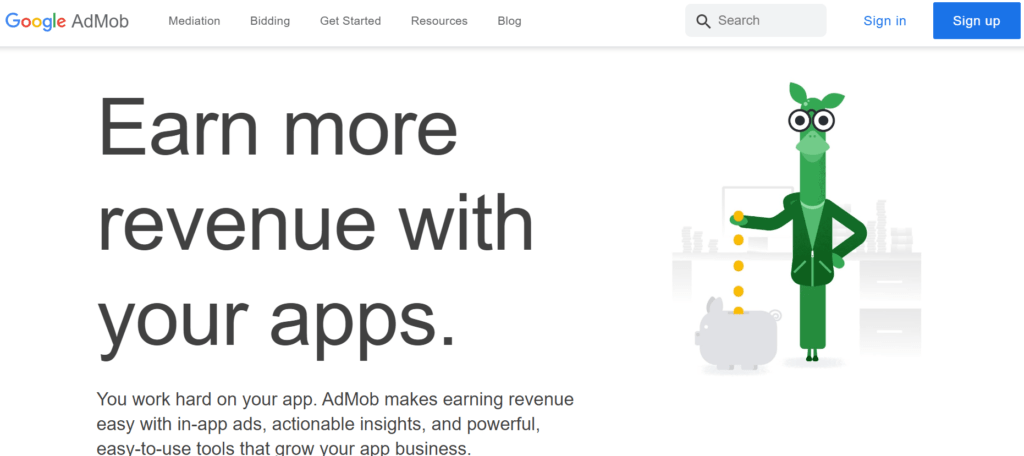
Google AdMob is a leading mobile ad mediation network integrated with over 30 top ad networks and reaches more than 97% of AdAge’s top 100 advertisers. It offers valuable features like automatic audience segmentation and automation, which allows for targeted ad delivery to specific user groups, enhancing engagement and revenue potential.
AdMob provides substantial benefits for publishers, including automated tasks and dedicated setup guidance for specific app types, such as mobile games. Most publishers need AdMob to access Google demand, and its user-friendly features and automation tools enhance efficiency and simplify the ad mediation process.
2. PubMatic
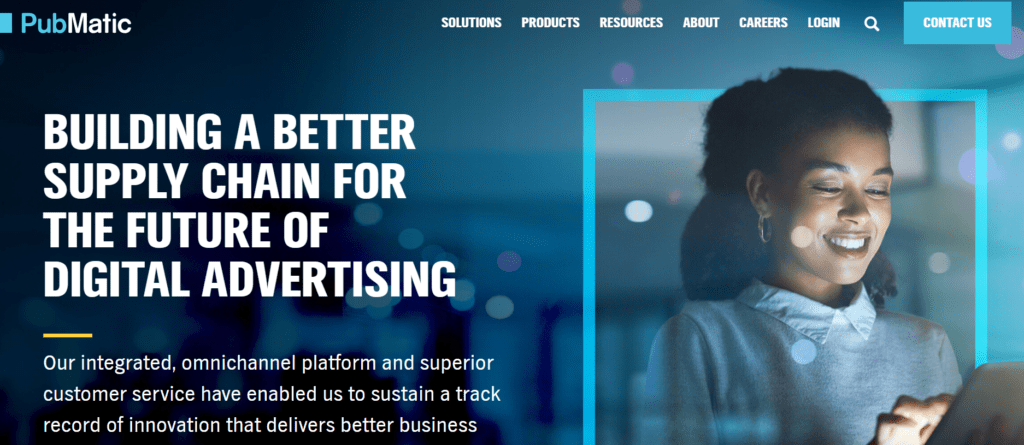
PubMatic is one of the leading programmatic ad mediation companies, primarily recognized for its OpenWrap SDK integration and powerful features. This platform allows publishers to boost user experience with complete dashboard control and advertise ads on different platforms in different formats.
This platform offers comprehensive tools designed to maximize ad revenue and streamline management. The OpenWrap SDK supports video ads and A/B testing, providing versatile options for ad strategies. Additionally, PubMatic’s platform includes valuable resources like informative guides and case studies, helping users optimize their ad performance and emphasizing transparency.
3. IronSource
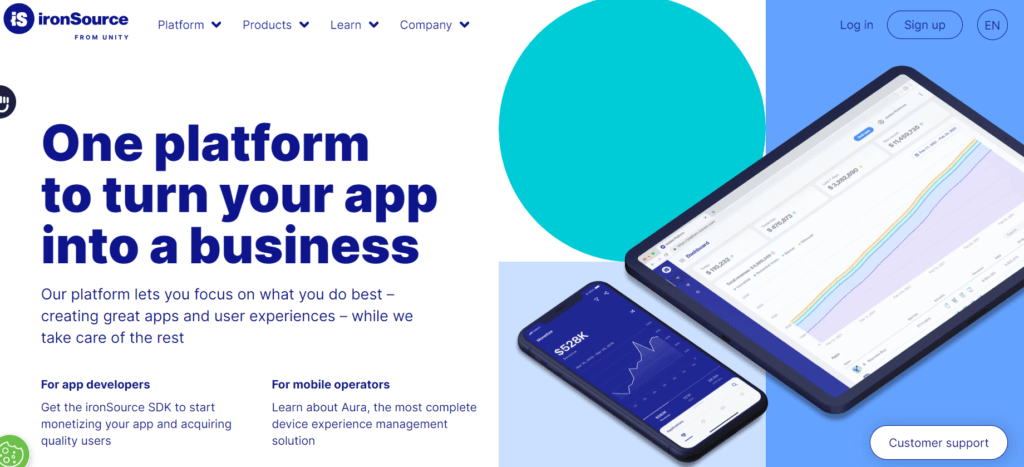
IronSource is known for its ability to connect publishers with extensive global demand. It supports an “auto-optimization algorithm,” which uses real-time data to select the best ad networks for auctions and allows publishers to gain more profit.
It is praised for its comprehensive reporting capabilities and strong relationships with top bidders. Its optimized features help publishers track performance and increase their ad revenue. With this ad mediation, publishers leverage advanced technology and strategic support to grow earnings in a competitive market.
If all of this sounds too perplexing, look no further than Adpushup.
Why Should You Rely on Adpushup?
Merely deploying header bidding or ad mediation in your ad stack isn’t enough. Consistently optimizing it with technical improvements is the need of the hour.
This is what AdPushup’s header bidding and Ad Mediation solution does. Through our multiple optimization features using data science and machine learning, we help publishers maximize their yield.
With our header bidding solution, you get:
- Automatic demand partner selection according to optimum requirements
- Smart timeout management
- Freedom to bring your own demand
- Bid monitoring and discrepancy resolution
Read more about our Header Bidding and Ad Mediation solution here – Ad Mediation and Header Bidding
Key Takeaways – Header Bidding vs Ad Mediation
- Header bidding involves offering ad inventory to multiple ad exchanges simultaneously, allowing bidders to compete in real-time whereas Ad mediation involves integrating multiple ad networks into a single ad server, which selects the best-performing network based on predefined rules.
- Next, header bidding can result in higher revenue potential for publishers as inventory is sold to the highest bidder, while ad mediation helps publishers optimize ad inventory by selecting the best network for each impression.
- Implementation of header bidding can be more complex than ad mediation, as it involves inserting a header tag on the website’s header and requires technical knowledge and resources.
- Ad mediation is easier to implement than header bidding, as it involves integrating multiple ad networks into a single ad server and setting up rules and preferences for each network.
- Both techniques have their pros and cons, and publishers should choose the option that best suits their needs and goals.
That being said, let’s wrap up the blog right here with the information mentioned above. For more information, please refer to the following frequently asked questions.
FAQs – Header Bidding vs Ad Mediation
Header bidding allows all demand sources to compete for ad inventory at the same time, whereas ad mediation selects the best ad network for each ad request. Header bidding is typically used for programmatic advertising, while ad mediation is often used for traditional ad networks.
No, they are not mutually exclusive. Some publishers may use both header bidding and ad mediation to maximize their ad revenue.

Deepak has a keen eye for detail and a deep understanding of the ad tech landscape. Whether it’s through in-depth articles, thought-provoking insights, or compelling storytelling, he’s dedicated to helping people navigate the complex world of ad tech with the simplicity of his words.
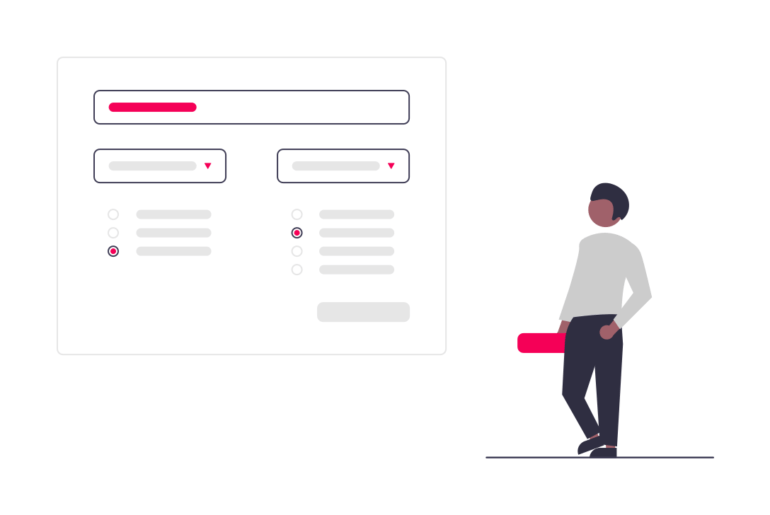

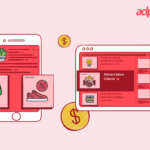

![CTV vs OTT Advertising: Which one is Right Pick for Publishers? + [6 Bonus Strategies] Ott vs Ctv](png/featured-image-270x180.png)


